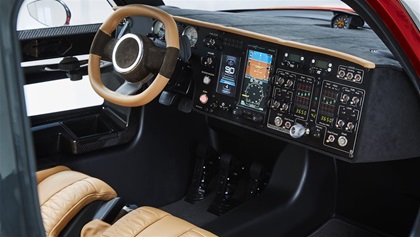Dutch firm shows off flying car
Gyrocopter converts to three-wheeler in certification testing
The quest to fly, land, fold airfoils, and hit the road has produced two competing designs, a flying car showdown of sorts with both contenders reported to be closing in on their first customer delivery. The Dutch firm PAL-V will soon display in Kuwait a gyrocopter that converts to roadworthy form in a few minutes.
The PAL-V Liberty is a gyrocopter with three wheels that is powered by a pair of Rotax 912 iS engines, and that redundancy is touted among the safety features built into a vehicle first envisioned in 1999. The company also notes that that a gyroplane design allows for a safe landing even in the event of power loss, and that the ability to land and drive under bad weather is also “an inherent safety aspect” of the design.
“It takes a lot of testing to prove that the PAL-V Liberty complies with the regulations” said Mike Stekelenburg, PAL-V's chief engineer, in a news release. “We deliberately chose to design, engineer and manufacture our flying car with proven instead of immature technologies, complying with existing road and air regulations (EASA and FAA). This approach focuses on safety and enables a realistic and imminent product delivery date.”

The firm will meanwhile bring the Liberty to the Dutch embassy in Kuwait on Nov. 12, hoping to attract more well-heeled buyers to purchase a two-seat, roadworthy aircraft with a top airspeed around 90 knots and priced from $399,000 to $599,000, depending on options.
The company, based in Raamsdonksveer, The Netherlands, was formed in 2007 and tested a proof-of-concept model on the road in 2008 and 2009, followed by flight testing in 2011 and 2012.
Terrafugia’s Transition, a light sport aircraft (thanks to a weight exemption) that has been on a similar development timeline, is also said to be arriving on the market any day now, according to the Chinese firm that owns Massachusetts-based Terrafugia. Geely Auto Group of China has not yet announced pricing.




